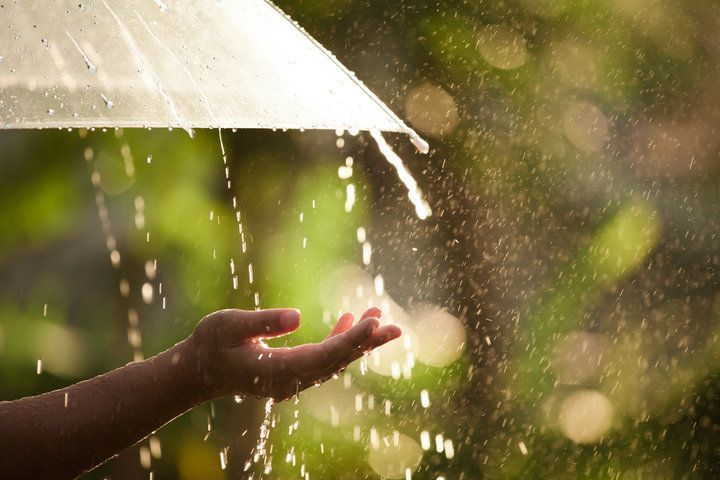Nothing beats listening to an intense spring rainstorm while watching it from inside your cozy home. Although it can be therapeutic to listen to, heavy downpours can put your house at risk for water damage. From the roof to the foundation, it’s important to spot-check your property for hazards this spring to avoid a water crisis later down the line. In this blog, we’ll go over spring storm safety tips so that you can enjoy those spring storms without worrying about property damage.
What Can You Do to Prepare for a Severe Spring Storm?
We can’t change the weather, but we can prepare ourselves to handle it better when it comes. Follow these 10 spring storm preparedness tips to protect yourself, your family, and your property from severe spring weather.
- Trim Shrubs and Branches Near Home and Power Lines. Make sure no trees or bushes hang over the roof or any windows. During spring storms, these hanging limbs might shatter glass and roof shingles and cause other harm. A strong spring storm may easily rip away a loose branch and hurl it through the air. Remove all dead and broken branches. Clear trees and bushes away from power lines.
- Check the Gutters. If your gutters are clogged, water can back up into your roof, meaning spring storm damage to your roof is much more likely. This often happens when the ice melts after accumulated winter debris blocks gutters. Keep drains and gutters clean and clear to ensure proper drainage. Also, ensure gutters are securely attached to the house to safeguard against strong winds.
- Clear the Lawn of Debris. Ensure fallen branches and yard debris are picked up and not allowed to accumulate against your home’s foundation, windowsills, or doors. Strong spring storm winds can cause them to become projectiles. When a storm is imminent, secure all loose items in your yard, bringing them inside if possible, and move vehicles and equipment to high ground.
- Caulk Windows and Doors. The windows and doors in your house may be susceptible to fractures that create the opportunity for spring storm damage that wouldn’t have occurred otherwise. Seal all cracks and gaps around doors with caulk, protecting them from spring storms. Caulking windows and doors help prevent leaks, which can lead to water damage.
- Inspect The Roof. No matter what type of roof your home may have, inspect it in the springtime for signs of anything that may have been weakened over winter. Spring storms are usually turbulent and gusty, so any weakness will most likely be taken advantage of.
- Prepare an Emergency Kit. In case of spring storm emergencies, it’s a good idea to have an emergency kit ready in your house. Include nonperishable foods and water bottles to last 3-5 days minimum, necessary prescription and non-prescription medicines, and first aid supplies in your kit. Blankets, warm clothes, and personal hygiene products are also recommended. If you have a pet, ensure you also have a spring storm emergency kit prepared for them. You should also have a working fire extinguisher handy.
- Create a Disaster Preparedness Plan. Create a disaster preparedness plan. Establish an outside meeting place and escape routes from each room in your house. Also, practice the plan with family members. Include your pets in the plan and make sure they wear an ID tag. Ensure you and your family know how to turn off utilities and use a fire extinguisher.
- Review Insurance Coverage. When planning for spring storm preparedness, review your insurance coverage with your agent and ensure you understand what’s covered and what isn’t. Obtaining flood insurance is generally a good idea since it isn’t included in standard homeowners’ policies. But don’t wait – flood insurance policies take 30 days to go into effect. Take a home inventory in case you need to file an insurance claim. Also, secure critical information in a waterproof container, such as documents, personal numbers, and insurance policies. After a spring storm passes, take note of any damage to your home so you can follow up with insurance companies who may need proof of spring storm damage. This includes photographing damaged items, such as broken windows, fallen trees/branches, etc.
- Prepare the Garden Shed. Make sure your garden shed and all your tools and equipment are secured. You may not need to go into it during a spring storm, but knowing what needs protecting is better than nothing. Don’t forget to include the garden shed and other outbuildings in your inventory.
- Check Your Sump Pump. If your home has a sump pump, check that it’s working correctly. A malfunctioning sump pump can contribute to flooding in your home when it fails to remove the incoming water, leaving water damage. Be sure to run through an essential maintenance checklist ahead of time to verify that everything is running smoothly.

Severe spring storms can cause extensive property damage.
For Water Damage Restoration This Spring, PuroClean of Northeast Houston – Beltway is Here to Help!
Water damage can be overwhelming, but you’re not alone. PuroClean of Northeast Houston – Beltway is here to restore your home or business to its pre-loss condition swiftly and efficiently. Our experienced team uses cutting-edge techniques and equipment to mitigate water damage, preventing further harm and mold growth. Don’t wait until it’s too late. Contact us now so we can restore your peace of mind and property. Give us a ring at (713) 250-8800 today!



 PuroClean of Northeast Houston – Beltway
PuroClean of Northeast Houston – Beltway